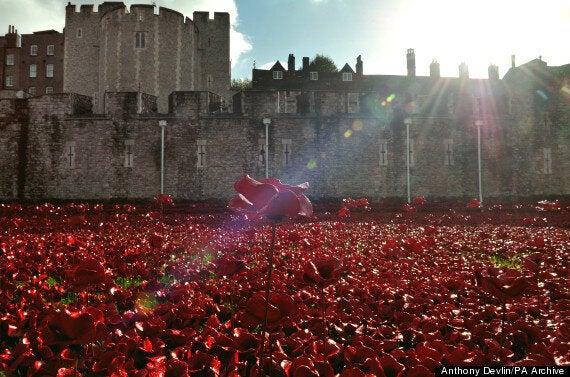The Guardian has hit back after a fierce backlash for publishing an article that branded the Tower of London's display of ceramic poppies as a "trite, fake, and inward-looking… Ukip-style memorial."
The art project, titled "Blood Swept Lands and Seas of Red," brings 888,246 ceramic poppies to the property of Her Majesty's Royal Palace and Fortress.
Appearing like a blood-red moat around the castle, the poppies pay tribute to the Great War's fallen troops and have so far drawn huge crowds who are keen to view the event.

But Guardian art critic Jonathan Jones, a former Turner Prize judge, prompted a furious response after dismissing the art instillation as a "deeply aestheticised, prettified and toothless war memorial."
Social media users and armed forces charities were quick to leap to the defence of the installation, branding the Guardian blog "a new low."
David Cameron was even drawn into the argument, praising the "stunning" art installation, calling it "extremely poignant" during Prime Minister's Questions.
Now, Jones has responded to his critics, saying his analysis of the work of art was was "reasonable, honest and founded not in some kind of trendy cynicism but a belief that we need to look harder, and keep looking, at the terrible truths of the war that smashed the modern world off the rails and started a cycle of murderous extremism that ended only in 1945. If it did end."
"The Mail in particular denounce[d] me as a 'sneering leftwing critic' and the Guardian for publishing my wicked words," he wrote in the paper today.
"I strongly believe that an adequate work of art about the war has to show its horror, not sweep the grisly facts under a red carpet of artificial flowers," he ini sited, sticking to his original argument.
In the original article, Jones wrote that it is "deeply disturbing" that a hundred years on from 1914, "we can only mark this terrible war as a national tragedy."
"A meaningful mass memorial to this horror would not be dignified or pretty," he argued. "It would be gory, vile and terrible to see. The moat of the Tower should be filled with barbed wire and bones. That would mean something."

In the latest piece Jones said the installation at the Tower "is abstract, and tells nothing about that history. It is instead a representation of grief as such – a second-hand evocation of feelings about the dead."
"It does not matter now, a century after it started, how sad we are about those the first world war killed. Our soulfulness won’t bring back a single slaughtered soldier. What can make a difference is our historical understanding of the Great War, its causes and consequence."